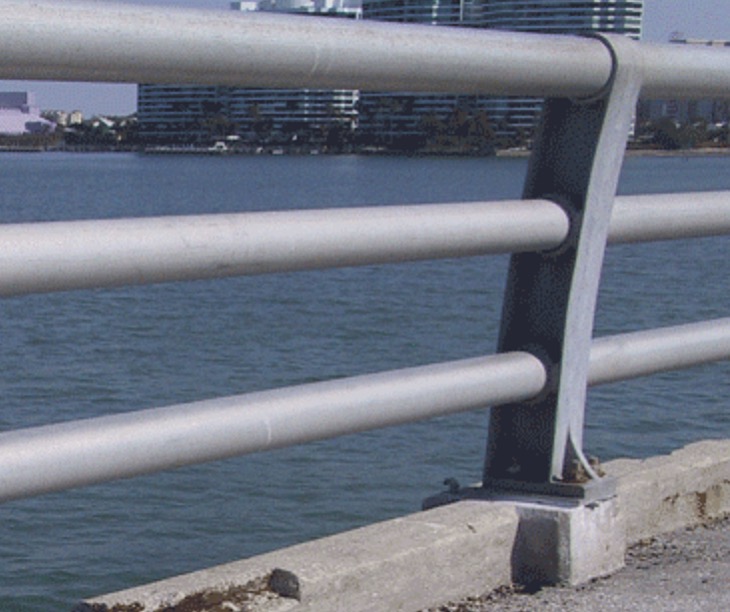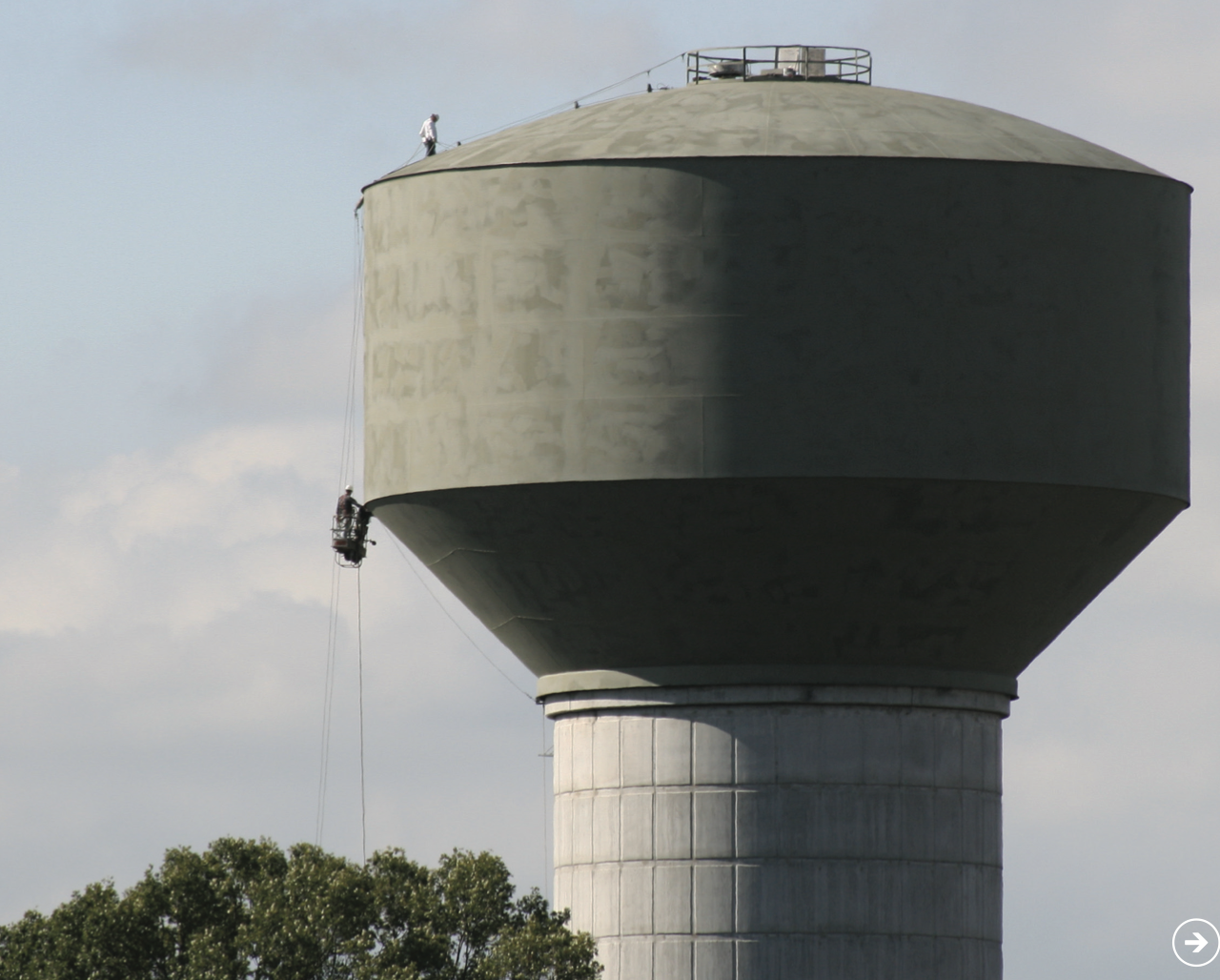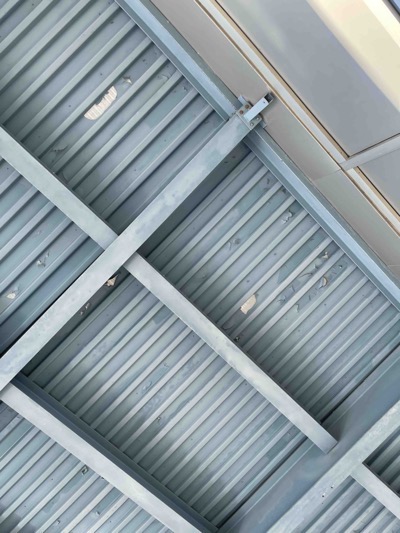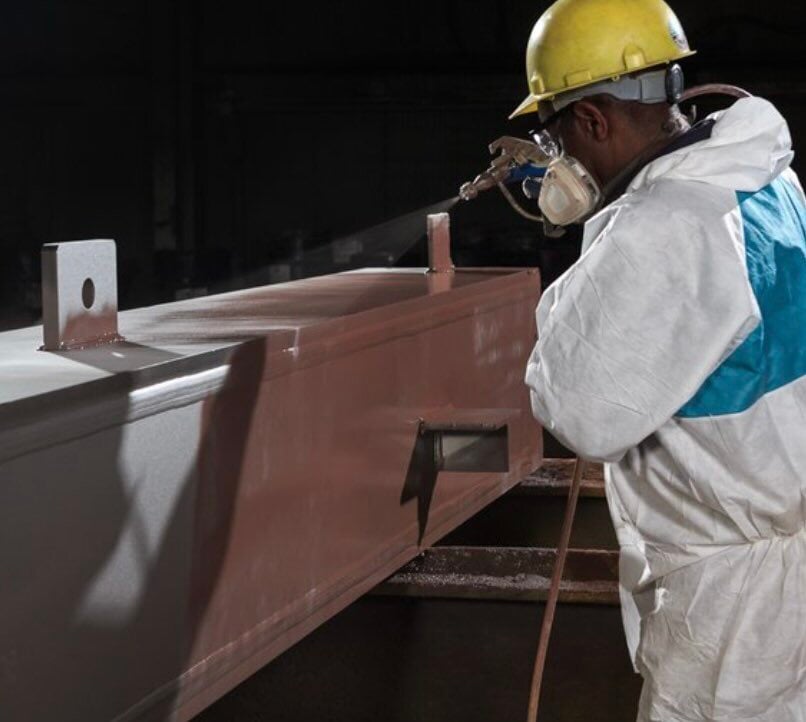
Hot Dipped Galvanized Steel VS Zinc Rich Primer
Both galvanizing metal and shop-applied zinc-rich primers are processes that provide superior corrosion protection for steel.
- High Performance Coatings
IF STEEL IS GOING TO BE COATED, A ZINC-RICH PRIMER IS A BETTER OPTION THAN GALVANIZING.
The best possible corrosion protection on steel is to have it coated with zinc. Both galvanizing metal and shop-applied zinc-rich primers are processes that provide superior corrosion protection for steel. Both provide an amount of zinc needed to promote electrical conductivity to provide corrosion protection.
However, when it comes to applying high performance coatings to galvanized steel, the process becomes very difficult. The American Galvanizers Association has identified and outlined some of the complexities involved with painting galvanized steel:
YOU MUST KNOW THE AGE OF THE GALVANIZING
Knowing the age of the galvanized steel prior to painting is important because age determines what type of surface preparation is required. Zinc oxide and hydroxide hinder the paint’s ability to adhere to unaged galvanizing. However, over the course of 6 to 24 months the zinc surface weathers and forms a thin, dense film of mostly zinc carbonate called the zinc patina. Once the patina has fully formed, the particulates no longer interfere with paint adhesion. Galvanized coatings can generally be grouped into three categories: newly galvanized, partially weathered, and fully weathered. The length of time a galvanized coating takes to reach each age level depends on environmental conditions, such as UV exposure, humidity, temperature, etc.
INSPECT THE GALVANIZED STEEL
Chromate Testing - Sometimes galvanized steel is dipped in a chromate bath immediately after galvanizing. The chromates can greatly interfere with paint adhesion and must be removed prior to painting. While some chromated galvanized surfaces have a dull, flat gray finish, it can be difficult to visually detect the use of chromates. If there is uncertainty on whether the steel was chromate quenched, the galvanized surface must be tested for the presence of chromates. This testing is fairly simple and is described in ASTM B 201. If chromates are found, the galvanized steel can either be allowed to weather for approximately two years before painting or the chromates can be cleaned off using one of the cleaning methods described in the next step.
Surface Imperfections - Regardless of the age of the galvanized coating, the surface should not have significant bumps, sharp icicles, high spots, or extremely rough edges. This is important because protrusions greater than the paint’s dry film thickness (five-ten mils) interfere with adhesion and can cause voids in the paint coating. To smooth out surface blemishes, hand-file or power-sand the area. Be very careful not to remove any more of the protective zinc coating than absolutely necessary.
CLEANING THE GALVANIZING
Newly Galvanized Steel - No dirt or grease present. Few zinc oxides and hydroxides formed. No major cleaning necessary.
Partially Weathered Galvanized Steel - Remove surface oxide and hydroxide film, as well as dirt and grime.
Fully Weathered Galvanized Steel - Requires minimal cleaning, such as a warm water power wash to remove contaminants from the surface. Power wash should not exceed 1450 psi.
NOTE: The goal of surface cleaning is to remove the grease, dirt and oils from the galvanized surface in order to promote paint adhesion. If it is determined that the galvanized surface needs to be cleaned, any of the methods listed below can be used. Remember, a cleaning solution is meant to clean the zinc surface, not remove it. Some cleaners may react poorly with certain paint systems. Be sure to consult the paint manufacturer regarding specific cleaning instructions.
Alkaline solutions in the pH range of 11-12, but not greater than 13, (dilute sodium hydroxide, trisodium phosphate or similar solutions) can be sprayed at a temperature ideally between 140 ̊F and 185 ̊F. If the solution is brushed on, use a nylon bristle brush — not copper or steel. After cleaning, thoroughly rinse with hot water and allow to dry completely.
Solvent cleaning (mineral spirits, turpentine, high-flash naphtha, or similar solvents) should be used only if they can be applied with lint-free rags or soft bristled nylon brushes. These rags and brushes must be changed frequently to avoid the spreading of contaminants. After cleaning, thoroughly rinse the surface with hot water and allow it to dry completely.
Ammonia cleaning, typically used in a solution of one to two percent ammonia, is usually only used when ash residue from the galvanizing process is present. Apply the ammonia solution with a nylon brush. After cleaning, thoroughly rinse the surface with hot water and allow to dry completely.
Thorough rinsing ensures that leftover residue from the cleaning solution will not interfere with paint adhesion.
SURFACE PROFILING
Sweep Blasting - Abrasive sweep blasting is the most common and effective way to profile galvanized steel. Particle size for a sweep blast of galvanized steel should range between 200 and 500 microns (8-20 mils). Aluminum/ magnesium silicate can be used to sweep blast, as can many types of natural media like corn cobs, walnut shell, corundum, limestone, and mineral sands with a Mohs hardness of five or less. Conditions for sweep blasting are recommended to be less than 50 percent humidity and a minimum of 70 ̊F. Consult SSPC Surface Preparation Specification 7 for sweep blasting procedures.
Over-blasting - When the galvanized coating is over-blasted, too much zinc is removed. Because the zinc protects the steel from corrosion as the paint wears away, the steel will rust if the zinc isn’t there to protect it. If this is the case, then the system will fail. To avoid this problem, be sure to use the correct media for sweep blasting galvanized surfaces, and do not blast in one area for too long.
USING PRIMERS WITH PREPARED GALVANIZED STEEL
After cleaning and profiling the galvanized surface, a primer coat is often used to help with paint adhesion. Many types of finish paints react poorly when applied directly to prepared galvanized surfaces. Primers allow for the successful use of many of these finish paint types. Epoxy and acrylics have a great track record and can often be used as a primer. Priming of galvanized surfaces should be done as soon as possible after cleaning and profiling. Because the zinc in the galvanized steel continually reacts with the environment, zinc oxides and hydroxides begin to build-up right away and can cause paints not to bond. Always apply primers according to the manufacturer’s directions and specified paint system.
APPLYING THE COATING SYSTEM TO PREPARED GALVANIZED STEEL
The paint manufacturer can provide more thorough information about the compatibility of specific systems with galvanized steel. Always consult the paint manufacturer prior to painting galvanized steel. Different physical and chemical characteristics for the same types of paint may have varied reactions with a galvanized surface.
NOTE: Some manufacturers suggest the following for their primers which are specifically designed to paint galvanizing: Allow to weather a minimum of six months prior to coating. Solvent Clean per SSPC-SP1. When weathering is not possible, or the surface has been treated with chromates or silicates, first Solvent Clean per SSPC-SP1 and apply a test patch. Allow paint to dry at least one week before testing adhesion. If adhesion is poor, brush blasting per SSPC-SP7 is necessary to remove these treatments. These primers have been used with inconsistent results. And because of VOC restrictions, many are no longer available.
CONCLUSION:
Obtaining a successful coating project when applying coatings over hot dipped galvanizing can be challenging. When you compare all of the procedures, inspection, testing, cleaning, profiling, etc., with the application of a shop-applied zinc-rich primer, the choice becomes clear. Unless the galvanizing is not going to be coated, the better choice is to use a Tnemec zinc-rich primer.
Find the original content link here from Tnemec Company
Check out these related resources
Shop Priming for High Performance
Unlocking the Power of Zinc Primers
Can Galvanized Steel Be Coated?
Don't miss these project profiles

Zinc rich primers in potable water tanks
Zinc Rich Primers In Potable Water Immersion

Can galvanized steel be coated?
What is Passivation on Galvanized Steel and Can...

Unlocking the Power of Zinc Primers in High...
Explore the transformative role of zinc primers...